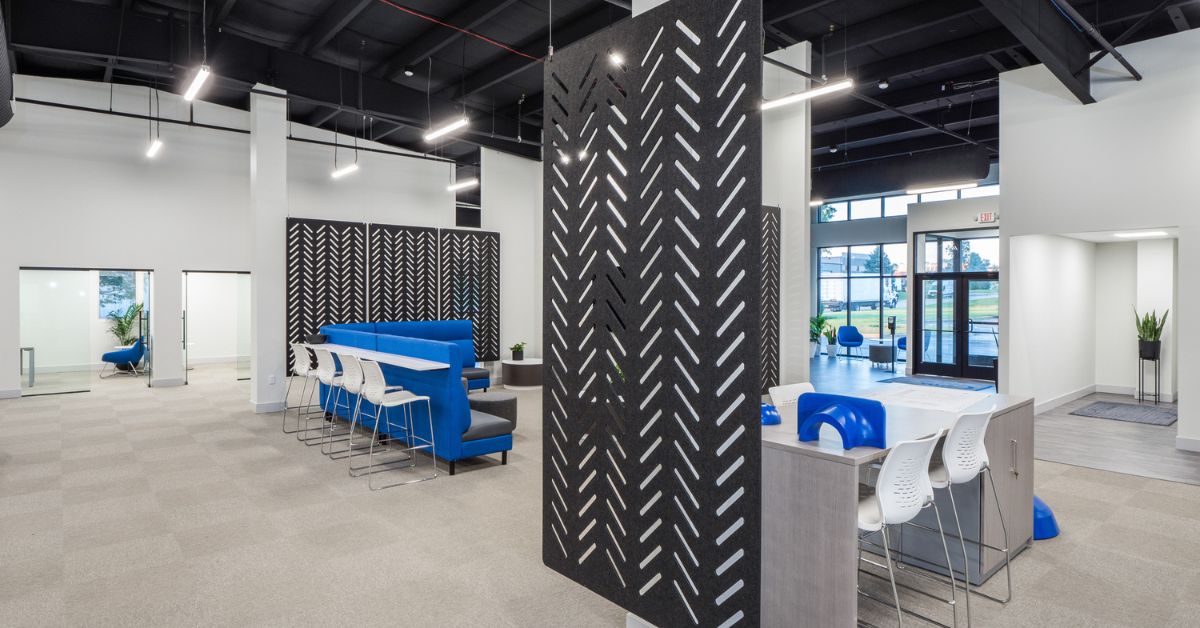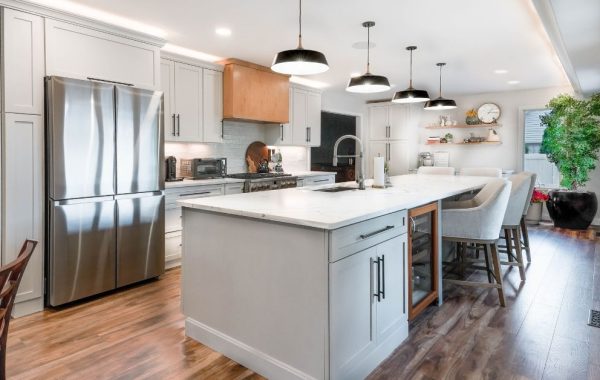How To Minimize Commercial Renovation Disruptions

Renovations are an inevitable part of maintaining and improving commercial spaces, yet they often come with challenges that can disrupt daily operations. Whether you’re upgrading office interiors, expanding retail spaces, or overhauling structural elements, renovations can impact efficiency, customer experiences, and employee productivity.
The key to minimizing commercial renovation disruptions lies in planning and executing while ensuring the business continues to operate smoothly. With the right strategies and thoughtful approaches, business owners can reduce downtime, maintain safety, and preserve a positive reputation during the renovation process.
Employing experienced contractors who understand the unique needs of commercial environments, and maintaining a focus on safety and regulatory compliance, further contributes to a smoothly executed project.
Begin With Thorough Pre-Renovation Planning
A well-thought-out renovation plan is essential to minimize operational disruptions and meet business goals promptly. Begin by defining the scope, timeline, and budget of the renovation, considering all potential impacts. Involve key team members and investors early to gather valuable input and address their concerns.
Create a step-by-step renovation blueprint that identifies phases, milestones, and resource allocation. Include backup plans for unexpected delays or complications to keep the project on track. Comprehensive planning ensures smoother renovation and creates clear expectations for all parties involved.
Communicate Regularly
Effective communication fosters understanding of the renovation’s purpose and reassures everyone involved of its benefits. Before the project begins, hold meetings to explain the process, projected outcomes, and potential challenges. Providing an open forum for questions helps alleviate uncertainties and builds trust.
Regular updates via emails, newsletters, or meetings maintain transparency and demonstrate your commitment to minimizing disruptions. Keeping employees and investors informed ensures alignment, cooperation, and smoother adjustments to temporary inconveniences. Clear communication prevents misunderstandings and keeps productivity on track.

Collaborate With an Experienced Renovation Team
A skilled team that understands the complexities of commercial renovations is vital for minimizing disruptions. Examine potential contractors carefully, prioritizing firms with a proven track record of success in similar projects and industries. Review portfolios, client testimonials, and references before making a final choice.
As a professional Illinois construction company, Baldovin Construction offers expertise in creating effective renovation solutions tailored to your needs. This will help manage timelines, troubleshoot challenges, and ensure quality workmanship. Working with the right team ensures the renovation meets high standards while staying within scope and schedule.
Schedule Renovations During Off-Peak Hours
The timing of your renovation work can significantly affect your ability to maintain normal operations. Assess your business’s daily and seasonal patterns to identify off-peak hours or slow periods that are less disruptive. Early mornings, evenings, or weekends may be the best options to facilitate the process.
Coordinate the schedule with your contractor to conduct work during the agreed hours. Creating a clear renovation timetable enables you to plan daily business activities optimally. This approach reduces interference with customer experiences and helps maintain steady revenue streams.
Prioritize Safety and Cleanliness
Focusing on these factors creates a safe and welcoming environment even during renovation efforts:
- Communicate health and hazard guidelines to all employees and customers.
- Implement robust safety protocols, including clear signage and restricted access to dangerous areas.
- Strictly adhere to all applicable building codes and regulations.
- Maintain cleanliness by using dust containment systems to protect air quality.
- Ensure proper and regular disposal of construction debris to uphold hygiene standards.
- Focus on creating a safe and welcoming environment throughout the renovation process.
Consider Temporary Business Relocation Options
Relocating your operations temporarily can sometimes be the most efficient way to minimize disruptions during commercial renovations. Explore options for moving critical business functions to alternate locations during peak construction phases. Plan this move to avoid any confusion among employees and clients.
Notify customers about the temporary relocation with clear and consistent messaging across all communication channels, including signage and online platforms. Ensure all necessary equipment and resources are operational in the new location to maintain productivity. Temporary relocation eliminates noise, hazards, or discomfort at the ongoing construction site.

Coordinate With Vendors and Supply Chains
Renovations may impact how your business handles incoming and outgoing goods, potentially disrupting operations. Work closely with your suppliers and vendors to notify them of construction timelines and alternative delivery arrangements. Discuss strategies to maintain consistent inventory levels, keeping operations as normal as possible.
Identify temporary adjustments, such as rerouting deliveries or modifying pickup times, to address construction-related limitations. Optimized supply chain management ensures customers continue to receive timely service without problems or delays. Keeping vendors informed promotes seamless operations throughout the renovation period.
Utilize Noise and Dust Control Measures
Construction noise and dust can disrupt your business environment, negatively impact employees, and discourage customer engagement. Implement noise-reduction techniques such as advanced soundproofing, quieter equipment, and scheduling high-noise activities during non-business hours.
Dust mitigation helps maintain a comfortable workspace. Use protective barriers, HEPA air filtration systems, or temporary plastic enclosures to limit dust spread. These measures protect indoor air quality, ensuring that customers and employees remain comfortable.
Leverage Technology for Remote Work Options
If your renovation involves office spaces, enabling remote work can be a practical solution to minimize disruptions. Equip employees with the necessary tools, such as laptops, software, and communication platforms, to maintain productivity.
Conduct regular check-in meetings to ensure remote employees remain engaged and aligned with project goals. Providing this flexibility can reduce the impact of noise, limited access, or relocation challenges during renovations. Remote work ensures continuity and lowers stress for your team.
Monitor and Evaluate Progress Regularly
Continuous monitoring of the renovation project is essential for identifying issues early and evaluating progress. Schedule regular meetings with your renovation team to review completed work, address any challenges, and make necessary adjustments to the plans.
Ask employees and customers for input to identify overlooked issues, such as unexpected inconveniences or delays. Their feedback helps fine-tune ongoing work and strengthens relationships through cooperation. Active monitoring keeps the renovation aligned with timelines, budgets, and safety standards.
Minimizing disruptions during commercial renovations requires a proactive approach that prioritizes preparation, communication, and adaptability. By conducting comprehensive planning, businesses can anticipate potential obstacles and establish clear objectives, timelines, and contingency measures.
Transparent and consistent communication with investors, employees, customers, contractors, and suppliers ensures that everyone remains informed and engaged throughout the renovation process. Flexibility is also key, as unforeseen challenges may arise that require swift decision-making and adjustments to plans.
By effectively combining these strategies, businesses can significantly reduce renovation-related disturbances, fostering a more positive experience for employees and customers while setting the stage for lasting improvements and continued success.




